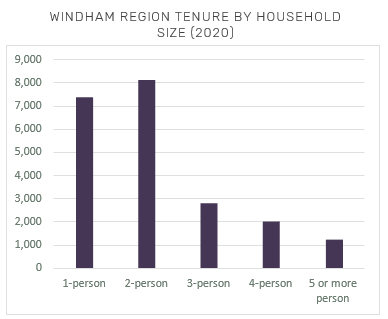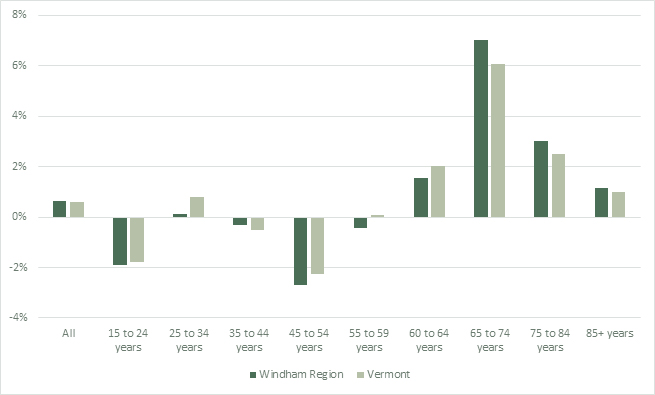Housing
Housing and Household Characteristics
The total number of housing units in the region has remained relatively stable from 2010 to 2020. The table below provides a summary of the region’s housing units in 1990, 2000, 2010, and 2020. By 2020, the number of owner-occupied units and rental units increased, while the number of seasonal units decreased slightly. Although some seasonal homes may have been converted to permanent homes during the pandemic, the overall numbers have stagnated.
The overall number of housing units has decreased for many reasons, including as a result of homes that were destroyed by fire or flooding during Tropical Storm Irene in 2011 (for example, Melrose Terrace Apartment in Brattleboro), and older homes deteriorating significantly. The number of new homes built in the region during this 10-year period was not enough to make up for those lost. This loss of homes is a significant concern and contributes to our current regional housing crisis. The decrease in the housing stock is even more significant since the region’s population increased by 3.9% from 2010 to 2020.[1]
WINDHAM REGION HOUSING UNITS, 1990-2020
Source: 1990, 2000, 2010, and 2020 Census, U.S. Census Bureau
The rental vacancy rate for Windham County was 3.4 percent in 2021, which is down significantly from 8.4 percent in 2010.[2] Very low vacancy rates are a concern because it means that housing may not be available for people looking to move to the region and those who already live in the region and would like to change their housing situation. This is also a concern for employers because new employees may not be able to find housing.

Another factor that has contributed to the housing crisis is that the number of people per household has decreased significantly over the years. Many of the older homes in the region were built to accommodate much larger families. The table to the right shows that most households in the region today consist of one or two individuals. This means that the types of housing in the region may not meet the needs of families today that might prefer smaller units.
The region’s aging population is another factor that affects housing needs. As can be seen in the chart below, households in the Windham Region are aging at a faster rate than the state overall. This trend will only increase as the population continues to age in the next 10 to 20 years. The region’s aging population will impact not only the type of housing needed, but home maintenance and accessibility needs for these residents.
Household Growth Rate by Age of Householder, 2010 - 20220

[1] 2010 and 2020 Census, U.S. Census Bureau
[2] Rental Vacancy Rate Chart, www.housingdata.org
